Can You Tile Over Drywall in A Shower? (Quick Answer!)
You deserve timeless, long-wearing, hardy tiles in your bathroom, but before you begin transforming your shower into a beautifully tiled haven, there are plenty of things to consider. Top of that list is answering the question, can you tile over drywall in a shower?
You should not tile over drywall in your shower or bathroom. This is because it won’t provide the necessary moisture resistance; therefore, water will eventually seep through the drywall, making the tiles crack, sag or fall. Additionally, the drywall will deteriorate and lead to mold, water damage, and pest infestations.
In this post, you’ll learn why tiling over drywall in a shower is a terrible idea, as well as what you ought to do instead. Stick around and become an expert on bathroom tiling and read this full, step-by-step guide on retiling your shower the right way!
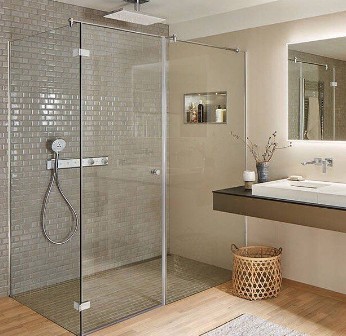
Can You Tile Over Drywall in A Shower? (Further Explanation)
Tiling over drywall is acceptable and safe for a fireplace or a kitchen backsplash because of their limited exposure to moisture. However, it’s not something you want to do in damp areas such as the bathroom.
Your shower is most likely the dampest place in your home and the main place you’ll want to avoid this practice. However, sometimes drywall manufacturers state that their product is safe for use in a shower. If that’s the case with your product, don’t listen to them! Shower tiling requires a much more intricate and cautious approach.
Can You Waterproof Drywall for Shower?
No, there’s really no good way to waterproof drywall effectively for a shower area.
If you want to tile your shower, the first step is to actually remove the drywall from the area and install something more water-resistant, like cement board.
As you’ll see below, this will allow you to waterproof your shower barrier effectively. Tiling over drywall in the bathroom will only lead to more problems down the road, no matter how much you try to waterproof it.
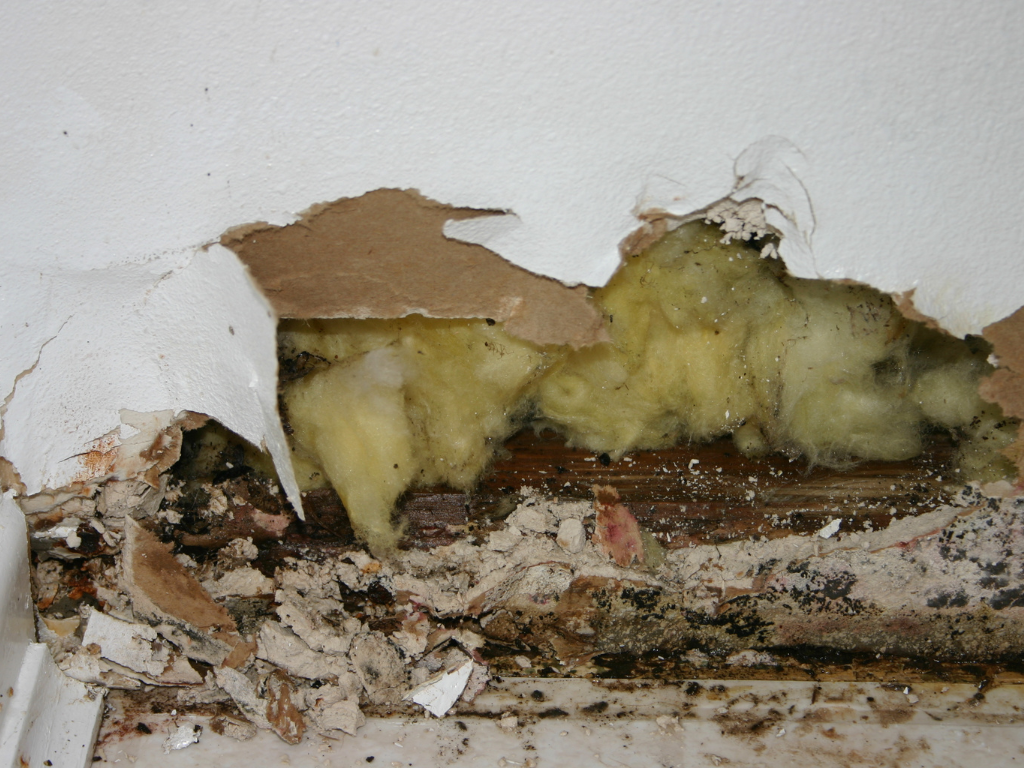
Can You Put Tile Directly on Drywall?
It’s safe to tile directly over drywall in places with less severe dampness. However, avoid tiling over drywall in damp locations, such as the shower, because water can gradually infiltrate under the tile, causing damage, mold, or bug infestations.
You may lay a ceramic tile kitchen backsplash right over drywall or plaster as long as the wall is flat and smooth. However, clean the wall to eliminate oil before applying thin-set glue and installing the tile, and apply grout when the glue has dried.
Why Can’t You Tile Over Drywall in Wet Areas?
Here are some reasons you may need to rethink installing tiles over drywall in wet areas, such as your shower:
1. Mold
Moisture can infiltrate behind the tile and drywall, as well as the wood at the back of the drywall. Mold will grow in these moist and dark environments, and you probably won’t notice until the tiled wall feels soft when pressed.
2. structural water Damage
Moisture may ruin the drywall and the timber behind your drywall. This may lead to structural damage if there is timber present (which it most likely is).
3. Pests
Pests often stay close to areas with water. Termites and carpenter ants take advantage of the water seeping behind the tile in the bathroom and even spread to other areas of your house and cause harm.
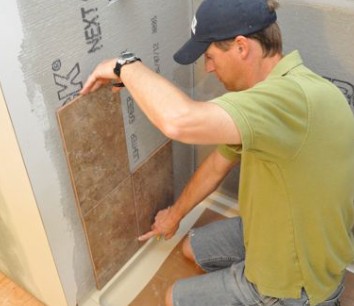
How Do You Cover Drywall in a Shower?
If you have drywall in your shower area and you would like to convert it to tile, you’ll need to follow these steps:
1. Remove the drywall in the shower area
Remove all drywall in the area you would like to tile, taking it down all the way to the studs. This will allow you to replace the drywall with a more water-resistant barrier upon which you can hang the tile.
2. Hang a water-resistant backing board Like Cement Board or “Wedi Board”
You’ll want to obtain a more water-resistant backing board. This will lay in place of the drywall that was previously removed from the shower area.
The classic choice here is cement board; however, ‘Wedi Board” is the all-around better option. It’s 100% waterproof and even prevents water vapor from seeping through cracks.
3. Use Waterproof tape or caulk to seal seams
Now you’ll want to go through with waterproof tape, or better yet, a caulk such as “Wedi Caulk” to seal all seams in the backing board that you chose. This is an important step to ensure water doesn’t seep into the wall cavities of your home causing irreparable damage.
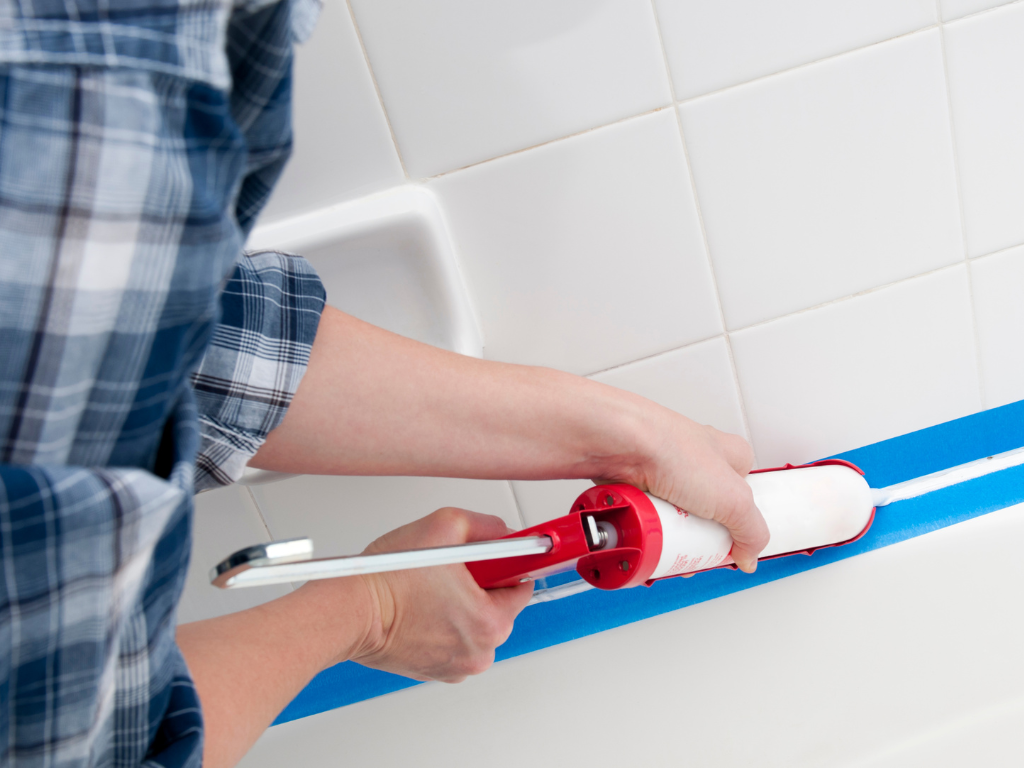
4. Apply adhesive and tile to the backing board
After sealing the joints, it’s time for you to apply the adhesive and lay the tiles. Most tilers use mastic or thin-set for ceramic adhesives, but thin-set is made specifically for moist environments. You may also hear thin-set referred to as mortar but some professionals.
At this point, you’ll simply apply the mortar and lay each tile. Be aware that thin-set doesn’t often dry quickly. Because of this, careless work can result in sagging tiles.
5. Wipe down the tiles and make sure the grout is clean
Finally, take a soft, micro-fiber cloth and wipe down the tiles, making sure your grout is clean and that all residue is polished away. Then, as your adhesive fully dries you’ll have that tile shower you’ve been dreaming of!
How Do You Waterproof Shower Wall Before Tiling?
Start by removing any existing drywall before tiling the shower, and ensure you remove it down to the studs. Place a waterproof backer board, such as Kerdi-Board or Hardi-Backer, then use a joint sealant and waterproof tape to seal the backer board joints.
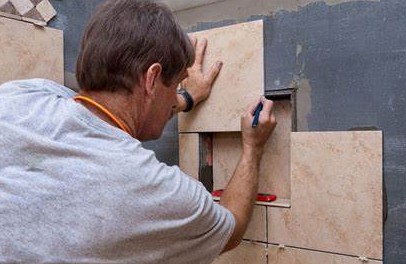
Can you tile over drywall in a shower summary
Ultimately, you shouldn’t tile over your drywall in the shower. If you install tile over drywall in your shower, you will likely end up with mold and structural water damage, not to mention pests!
Drywall is simply not made for moist environments. It’s even in the name! Make sure you use something more waterproof, like “Wedi Board” instead.
can you put tile on sheetrock in the bathroom?
No, you really out to tile over something more waterproof like cement board or “Wedi Board.”
waterproofing drywall for shower
There’s really no way to waterproof drywall for a shower. Drywall doesn’t do well in moist environments, and even if you put something like cement board over it, moisture and water vapor can still seep through to the drywall below.
prepping drywall for shower tile
You shouldn’t tile over drywall in your shower at all. It’s not the appropriate surface for the moisture your shower will produce.
can you tile over greenboard in a shower?
The only type of drywall you can tile over in a shower is greenboard, but even this type of drywall requires preparation. If you want tiles to stick to the greenboard you’ll need to skim coat and seal it first.
how to tile over drywall
If you’re planning on tiling over drywall in your kitchen, or other dry areas of the house, make sure you clean the wall first. Next you’ll apply a thin set of glue to hold the tiles in place. Next you’ll apply the grout.
Here are some other interesting topics:
Let Us Know How We’re Doing!
Did this expertly prepared resource answer your question?
Do you have another question about home maintenance, home improvement projects, home appliance repair, or something else?
Get more information, send in questions and keep the discussion going by contacting the I’ll Just Fix It Myself company customer service team at at 1-800-928-1490 or Email us at [email protected]
